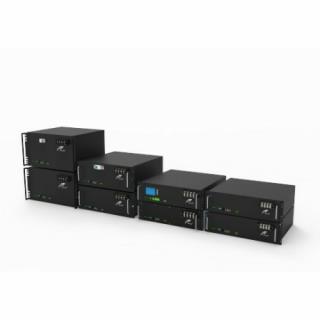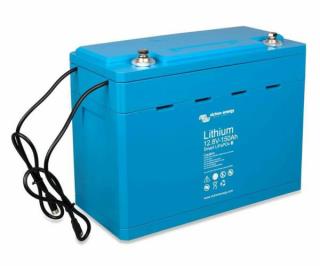Sodium-Ion solid-state batteries and Solar Power: A match made in heaven
CODESOLAR
ENERGIA
S. A.
CSE
Solar Batteries - Lithium - Sodium - EV electric vehicles
The sun is our partner
As the renewable energy market experiences significant growth, sodium-ion batteries (SiBs) are emerging as a promising energy storage solution technology addressing challenges with excess energy production, peak usage management, & more. Join us as we discuss the role of SiBs in the transition to renewable power, particularly solar power!

CodeSolarEnergia S. A.
Quito, Ecuador, Sudamerica
Articulos - Video - Fotos
One challenge of renewable sources like solar is to capture and store excess energy for future use, creating a need for energy storage systems that can meet the needs of energy consumers and enhance grid resilience to guarantee that critical services remain operational. At present, lithium batteries are the most popular choice for solar installations.
Sodium-ion batteries (SiBs), also called solid-state batteries, are an attractive option for energy storage solutions for renewable energy technology, like solar power, due to its cost-effectiveness, increased safety features, and environmental considerations.
Advanced energy storage technologies are an instrumental component of renewables, and next-generation battery technology is driving safer and more reliable solutions, creating much-needed flexibility for large-scale installations like commercial, industrial, and utility-scale solar, as well as residential installations.
Solar energy storage systems rely on a bank of series-connected batteries to achieve desired voltage, then connecting those banks in parallel to meet the Kwh demand for a particular home or commercial space. While lithium batteries are the most popular choice at the moment, sodium-ion battery (SiB) technology is a good candidate for these power sources by comparison for several reasons.
Sodium is abundant.
Some estimates state that sodium is 1000 times more abundant than lithium, making SiBs attractive from an economic perspective as far as raw materials are concerned. Lithium prices have fluctuated wildly over the past several years, topping out in 2022 at nearly 70,000 USD for a metric ton of battery-grade lithium carbonate. While prices have dropped significantly, the price of sodium carbonate is still a fraction of the cost, coming in at around 300 USD per metric ton, although it should be acknowledged that the demand for sodium carbonate is also much less than its lithium counterpart. Still, the sheer abundance of sodium carbonate will work in its favor to keep prices lower than lithium carbonate, which by some estimates will see costs of up to 30-40% less for sodium batteries.
The above must be taken into account from a supply chain perspective. Nickel, Iron, Manganese, Copper, Titanium, Aluminum, and Carbon are all among the materials that can be found as the components of SiB active materials and current collectors. Large quantities of these elements are mined and recycled, resulting in minimal if not zero concerns regarding their supply chain. This factor also translates into SiBs being potentially less expensive compared to some other lithium batteries and not influenced by the volatility of the lithium market. Thus, SiBs look to be an economically attractive choice, especially for large-scale renewable installations where cost is a significant factor.
Secondly, SiBs certainly enjoy a better reputation when it comes to safety,
especially when compared to their lithium counterparts. Although still using an organic solvent for the electrolyte, SiBs are generally considered safer than lithium batteries. You can certainly drive SiB batteries into thermal runaway if you significantly exceed their design parameters, but the energy release is much less, allowing better design options for propagation prevention. This not only safeguards against potential hazards but also contributes to the longevity and reliability of the system, bolstering confidence in its deployment in stationary energy storage where safety and dependability are priorities.
A significant feather in the safety cap of SIBs is the fact that you can take certain types down to zero voltage, unlike lithium batteries which should never be depleted to below their minimum voltage, 2.4 V to 3.0 V per cell. What does this mean in terms of safety? It means SiBs are safer during external short and over-discharge scenarios. It means a safer environment for maintenance and repair. Also, it means that manufacturers can transport sodium-ion batteries with the battery terminals directly connected and the voltage held at zero, which mitigates safety risks while also lowering costs.
Sodium batteries also can operate at a higher temperature range, and even in extreme temperatures on either end of the thermometer. This fact of the technology creates flexibility in residential energy storage installations especially, where options on where to house energy storage systems are limited, usually defaulting to a garage or other area that offers temperature controls, as lithium batteries and extreme heat or cold do not mix.
Additionally, SiBs have the potential for long cycle life,
meaning they can be charged and discharged many times over their lifetime. This is beneficial for energy storage applications where longevity is crucial, as these systems need to last significantly longer than, say, EV batteries or other commercial applications to align with the 20-year lifecycle of solar power projects.
All of these factors make sodium-ion batteries an attractive option for energy storage, particularly when it comes to complementing renewables, as cost-effectiveness, safety, and environmental considerations are paramount as we move headlong toward these alternative power sources.
As we stand on the cusp of a renewable energy revolution, the role of innovative battery technologies is poised to help usher in this sea change in powering our future. As such, SiBs emerge as a compelling solution, offering a blend of affordability, sustainability, scalability, and safety that positions them as a frontrunner in the race towards clean energy. With continued innovation and investment, as well as increasing demand, SIBs hold the promise of reshaping the landscape of energy storage, paving the way for a more resilient and sustainable energy infrastructure with renewables at its core.
Fuentes: https://acculonenergy.com/sodium-ion-and-solar-power-a-match-made-in-heaven/
The renewable energy market is on a growth trajectory as underscored by current green tech investment trends, global policy shifts toward zero emissions and incentives via feed-in tariffs, tax credits, and subsidies, as well as declining costs, technological advancements, and overall market dynamics driving the shift away from fossil fuel reliance.
Alternative power sources like solar can result in excess electricity during certain times of the day, but no energy production when the sun isn’t out. There are also usage fluctuations, which can put strain on the grid as a result of the ebb and flow of energy consumption, especially during peak usage timeframes.
Northvolt Sodium-Ion solid-state batteries
Articulos - Video - Fotos





